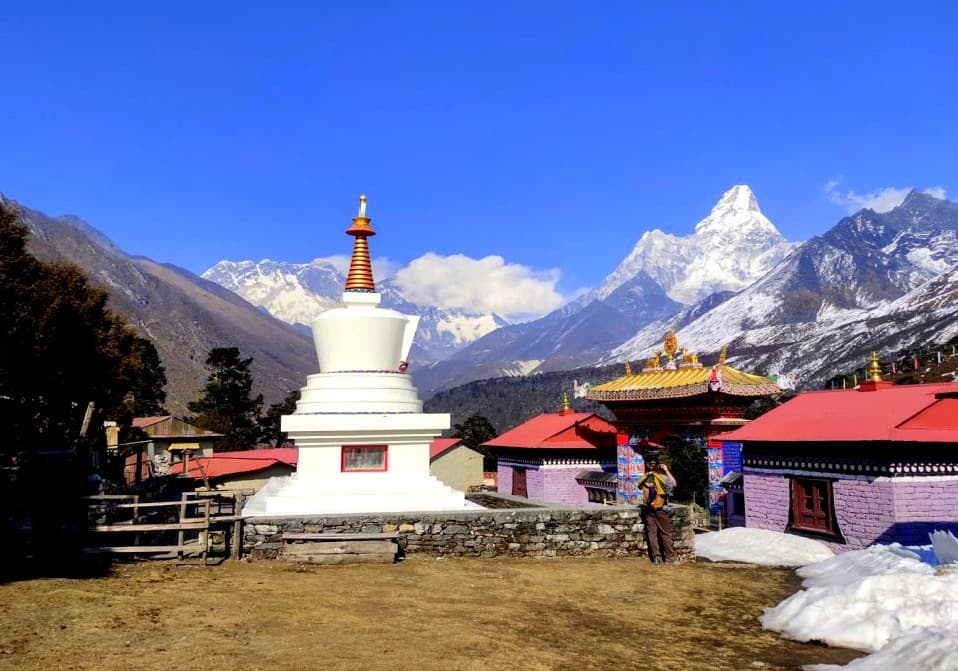Ever wondered what it feels like to witness a ritual that's remained unchanged for centuries? Picture yourself in a remote Himalayan kingdom, watching masked monks perform sacred dances against a backdrop of snow-capped mountains and medieval monasteries.
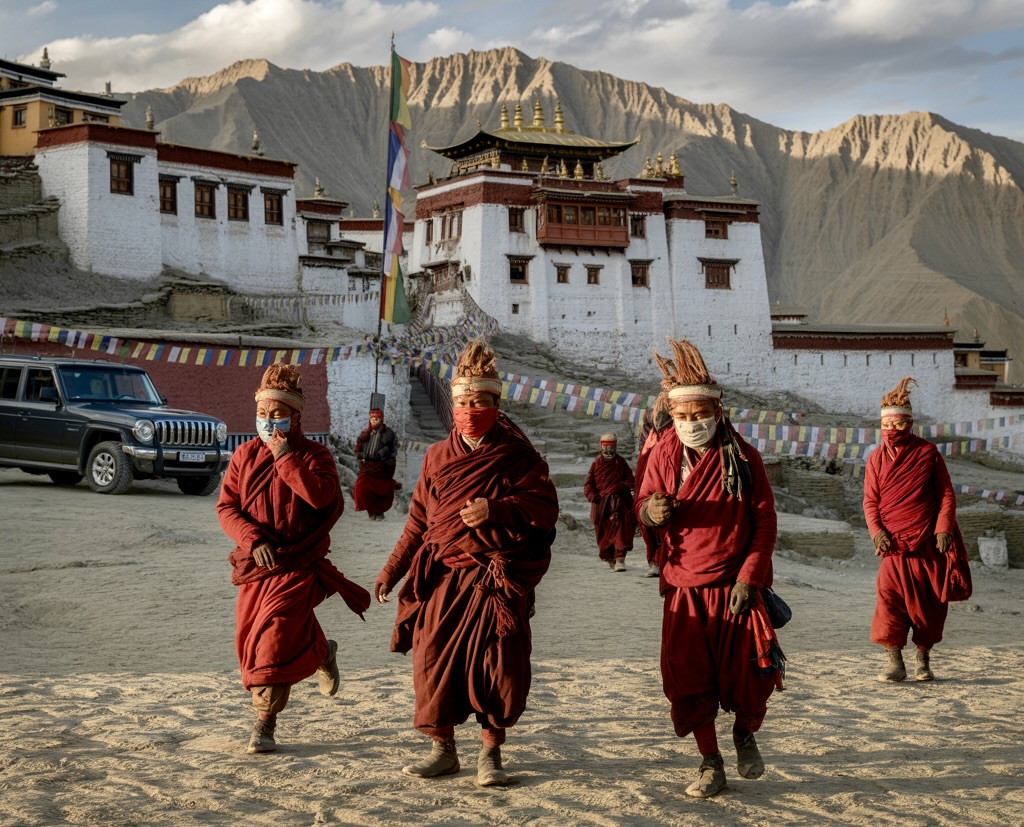
That's the Upper Mustang Tiji Festival for you – Nepal's best-kept secret that's about to become your next adventure obsession.
Our Upper Mustang Tiji Festival Jeep Tour takes you deep into the "Forbidden Kingdom," a place that feels like Tibet but without the red tape. You'll cruise through dramatic landscapes, stay in luxury tea houses, and witness an authentic Buddhist festival that few outsiders have ever seen.
But here's the kicker – this isn't just another tourist trap. What happens when you join locals in celebrating the triumph of good over evil will change how you see the world.
Discovering the Ancient Kingdom of Upper Mustang
Journey to the Forbidden Kingdom
The journey to Upper Mustang is nothing short of magical. We drive through rugged terrain that gradually transforms from lush green hills to arid, moon-like landscapes. This transition alone tells the story of how special this place is.

Until 1992, this ancient kingdom remained completely closed to foreigners. Even now, we need special permits to enter, which adds to its mystique and exclusivity. The drive takes us through some of Nepal's most challenging yet breathtaking roads, following the deep Kali Gandaki gorge – the deepest gorge in the world!
As we ascend, the air thins and the views expand. The journey itself becomes part of the adventure, with stops at traditional tea houses and overnight stays in charming villages where time seems to have stood still.
Historical and Cultural Significance
Upper Mustang isn't just a place – it's a living museum. This region was once an independent kingdom called Lo, with strong ties to Tibet. We can see this influence everywhere – from the architectural style to religious practices.
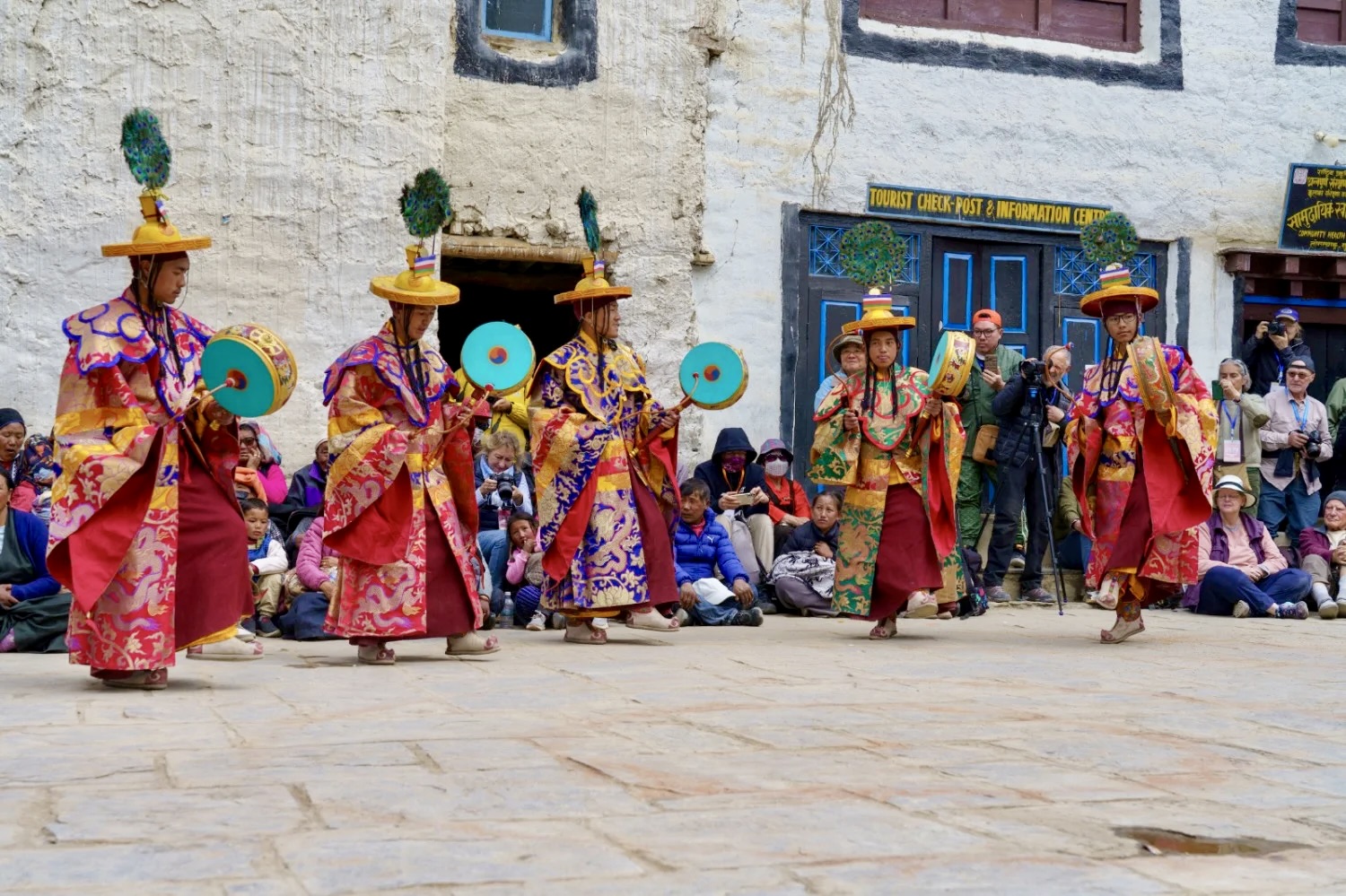
The area houses some of the oldest Tibetan Buddhist monasteries, many containing priceless artifacts and centuries-old thangka paintings. Lo Manthang, the walled capital, remains largely unchanged since the 14th century. Walking through its narrow alleys feels like stepping back in time.
What makes Upper Mustang truly unique is how it has preserved its cultural identity despite external influences. The locals still speak traditional dialects, maintain ancient customs, and practice Buddhism with rituals that have disappeared elsewhere.
Geographic Location and Landscapes
Upper Mustang sits in Nepal's rain shadow, creating a dramatically different landscape from what most people expect in Nepal. We're talking about a high-altitude desert with eroded hills in shades of red, yellow, and brown.
The region borders Tibet to the north and is nestled within the Annapurna and Dhaulagiri mountain ranges. This strategic position created a unique microclimate and terrain that shaped its culture and history.
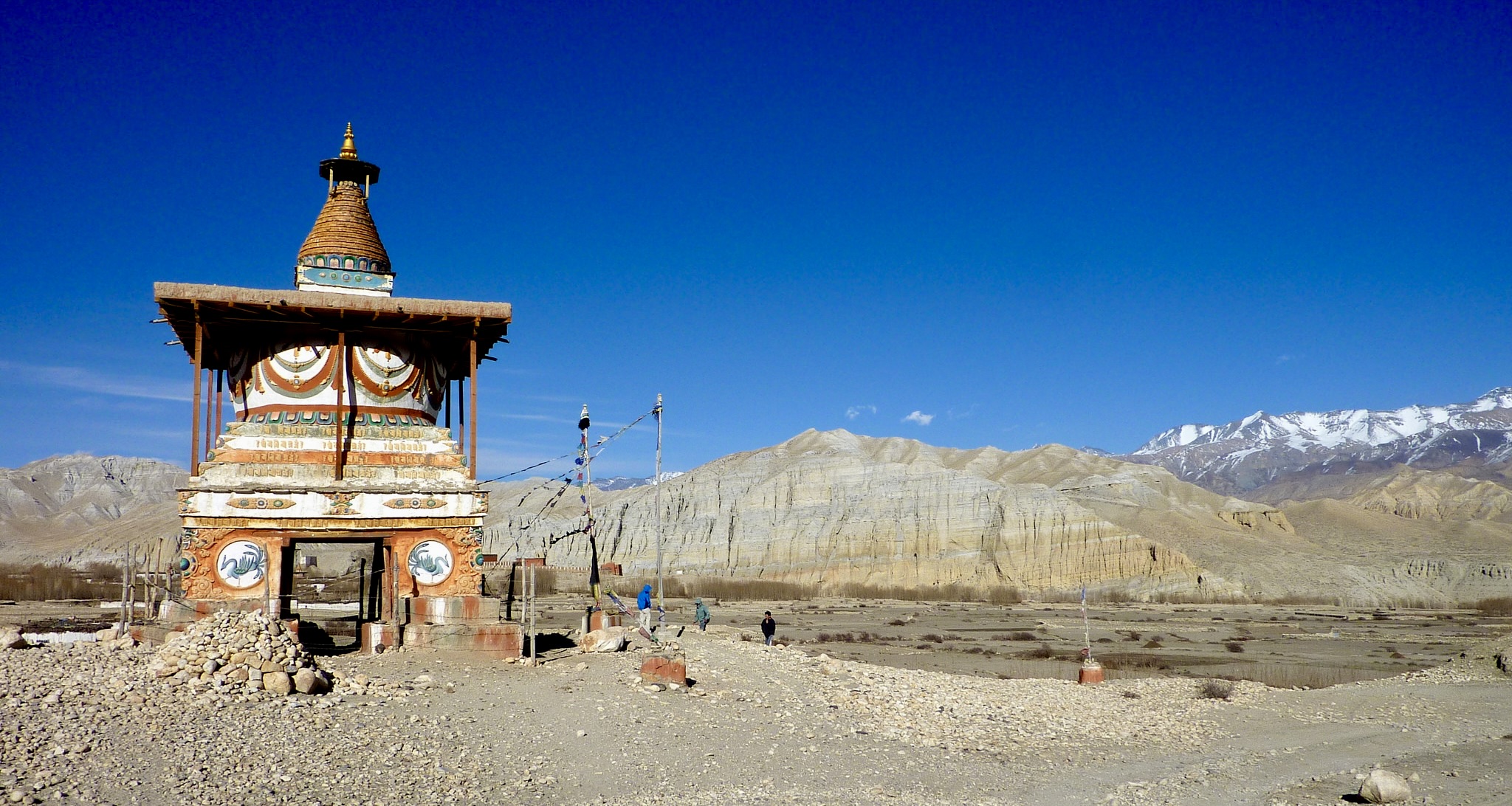
Throughout our journey, we encounter deep ravines, bizarre rock formations, and wind-eroded cliffs that house ancient cave dwellings. Some of these caves were used as homes, while others served as meditation chambers for Buddhist monks.
Best Time to Visit Upper Mustang
While many parts of Nepal become inaccessible during the monsoon season, Upper Mustang remains perfectly accessible. We recommend planning your trip between March and October.
May is particularly special as it coincides with the Tiji Festival. This three-day ritual celebrates the triumph of good over evil and features vibrant masked dances and ceremonies.

Summer months (June-August) offer clear skies and pleasant temperatures, making it ideal for photography enthusiasts. The landscape's vivid colors pop against the deep blue sky, creating postcard-perfect vistas.
Spring (March-May) treats visitors to rare wildflowers that somehow manage to bloom in this harsh environment, while autumn (September-October) brings incredibly clear mountain views and comfortable temperatures for exploration.
The Sacred Tiji Festival Experience
Origins and Significance of Tiji Festival
The Tiji Festival isn't just another colorful celebration—it's the beating heart of Upper Mustang's cultural identity. Dating back centuries, this three-day ritual festival originated as a prayer for world peace and to celebrate the triumph of good over evil. We've witnessed how deeply this festival resonates with locals who believe it wards off evil spirits and brings prosperity to their community.

The name "Tiji" comes from "Tempa Chirim," which means "prayer for world peace." Every spring (usually in May), the walled city of Lo Manthang transforms as monks from Choede Monastery prepare for this spectacular event. What makes Tiji special is how it preserves the rich Tibetan Buddhist traditions that have remained largely unchanged for generations.
The Three-Day Celebration Schedule
The Tiji Festival unfolds over three mesmerizing days, and we've crafted our jeep tour to give you full access to every moment.
Day 1: "Tsa Chham"
The opening ceremony features the dramatic entrance of Dorje Jono, the deity who defeats his demon father. Monks in elaborate costumes and masks perform sacred dances in Lo Manthang's main square. We ensure you get prime viewing spots for this extraordinary spectacle.
Day 2: "Nga Chham"
The second day brings more intensive rituals where the story continues with increasingly complex dances. The atmosphere grows more electric as local villagers gather in traditional attire, adding their energy to the ceremonies.
Day 3: "Rha Chham"
The final day reaches a powerful climax with the symbolic destruction of evil. A large effigy representing negative forces is dismembered and scattered, symbolizing the triumph of good. We'll be right there as the celebration concludes with communal feasting and jubilation.
Ritual Dances and Performances
The heart-stopping ritual dances of Tiji aren't just performances—they're living prayers in motion. Monks transform into deities through elaborate masks and costumes, performing choreographed movements passed down through generations.
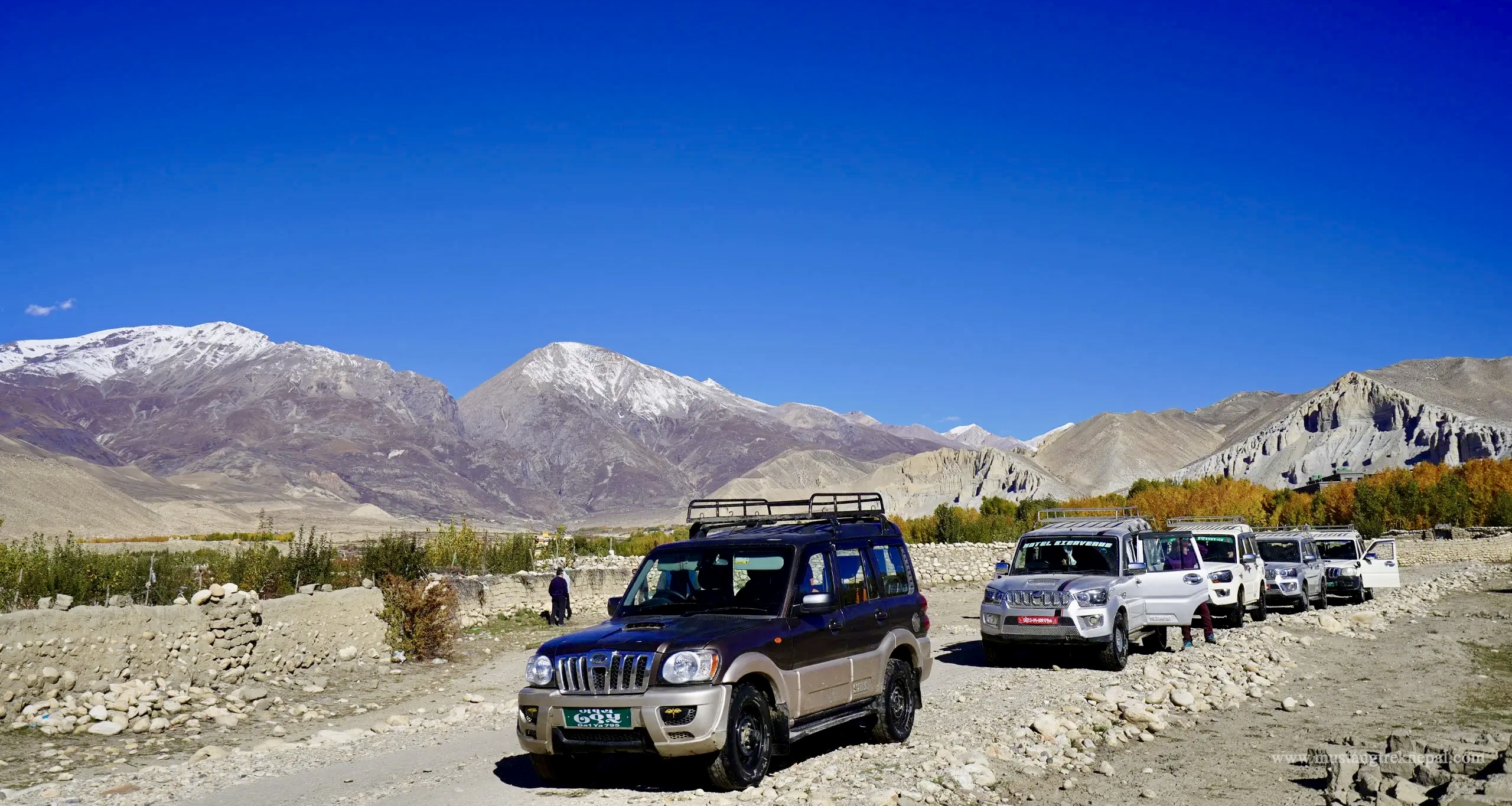
The main character is Dorje Jono (also called Yama Dharmaraja), who battles against his demon father to save the kingdom of Mustang from destruction. Each dance tells a chapter of this epic struggle, with every gesture and movement carrying deep symbolic meaning.
We've spent years building relationships with the local monks, giving our guests unprecedented access to observe the meticulous preparations. From the thundering drums to the haunting horns, the musical accompaniment adds another layer to the hypnotic experience.
Spiritual Meaning Behind the Ceremonies
Beneath the spectacular visual display lies profound spiritual significance. The Tiji ceremonies reenact the victory of Buddhist principles over ignorance, greed, and negative forces. We've consulted with local lamas to ensure we can share the authentic meaning behind each ritual with you.
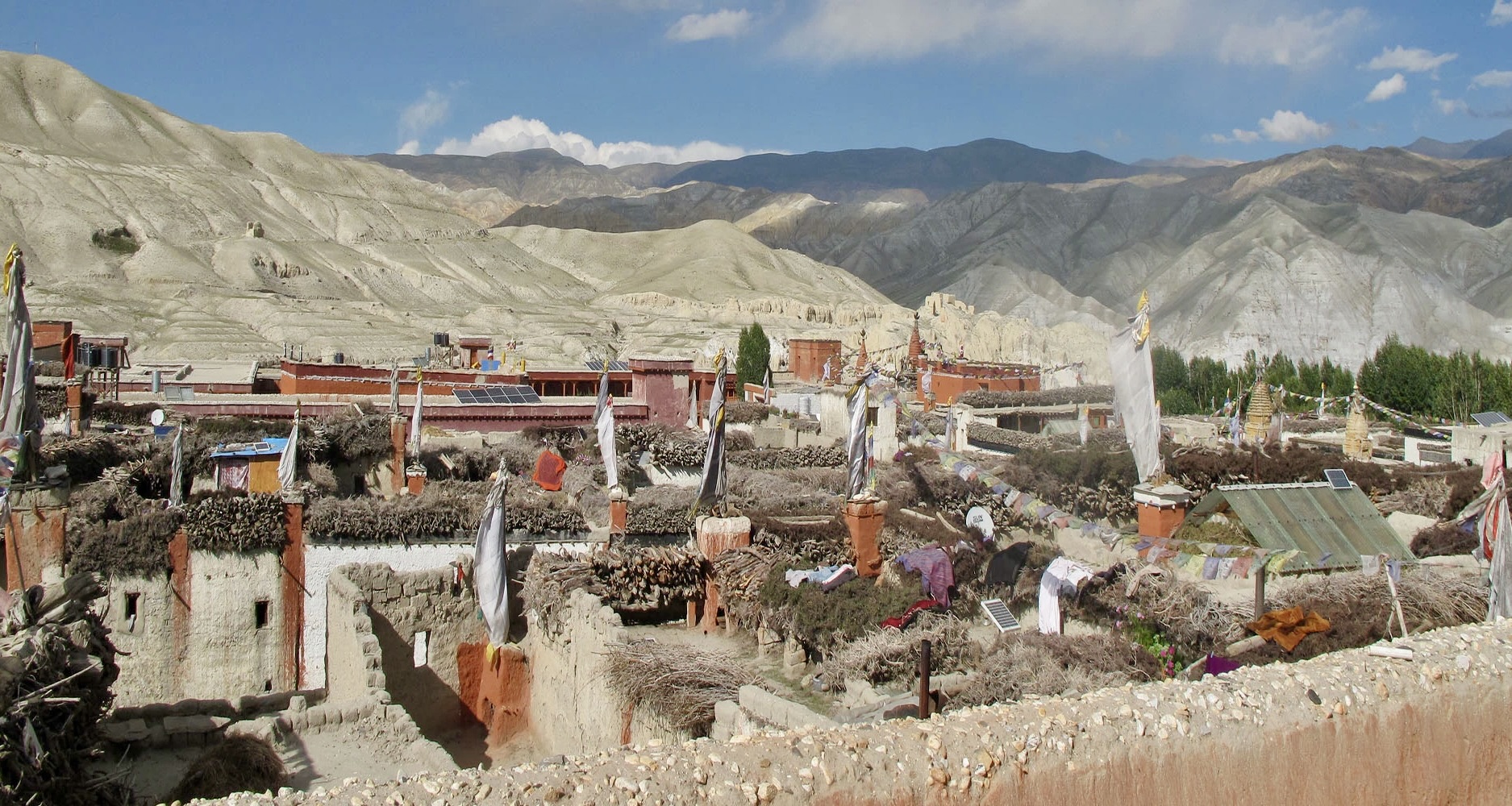
The festival represents the cosmic struggle between Dorje Jono and his demon father, who caused destruction by creating water shortages and various diseases. This symbolism resonates deeply in the arid landscape of Mustang, where water remains precious.
For locals, participating in Tiji isn't just tradition—it's an active spiritual practice that renews their connection to ancient wisdom. When you witness these ceremonies with us, you're not just watching a cultural show but participating in a living spiritual tradition that has sustained this remote community for centuries.
Photography Opportunities During the Festival
Tiji Festival offers photographers a dream canvas of colors, movement, and emotion. We've scouted the best vantage points to capture the dramatic mask dances, swirling costumes, and intense expressions without disturbing the ceremonies.
The morning light streaming into Lo Manthang's ancient square creates magical conditions as it illuminates the dancers' vibrant costumes against the backdrop of medieval mud-brick buildings. The contrast between the monks' bright ceremonial garments and the earthy tones of the walled city creates stunning visual compositions.
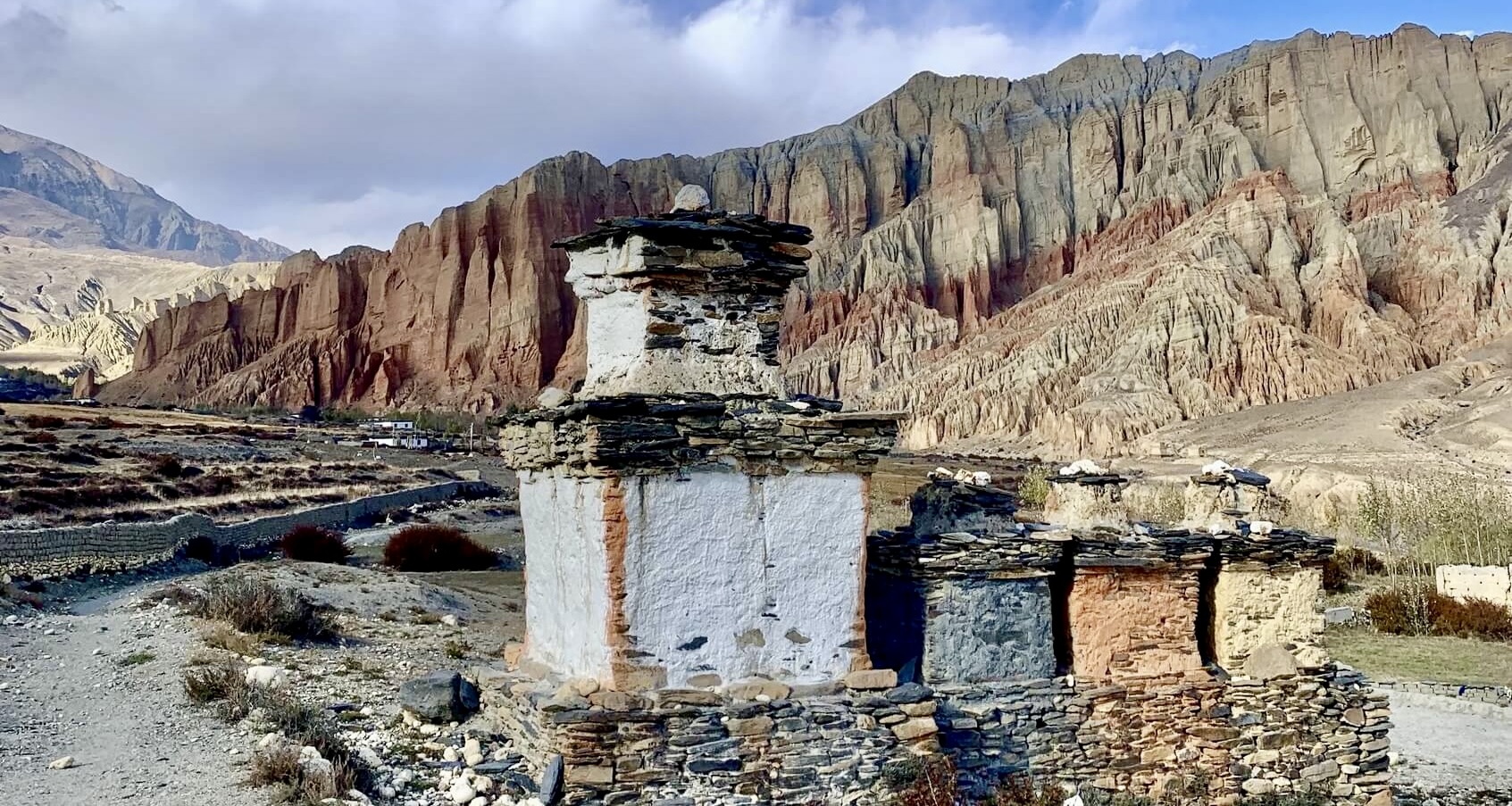
Beyond the main performances, we'll guide you to capture intimate moments—elderly locals spinning prayer wheels, children in traditional dress, and the anticipation on faces as the community gathers. Our guides know exactly when photography is permitted and when to simply absorb the experience without cameras.
We recommend bringing longer lenses for close-up details of masks and movements, while wide-angle lenses help capture the grand scale of the celebrations against the dramatic Himalayan landscape. The festival's vibrant colors pop beautifully in both morning and late afternoon light.
Luxury Jeep Tour Itinerary
Day-by-Day Route Planning
We've crafted the perfect itinerary that balances travel time with cultural immersion during the Tiji Festival. Our 11-day jeep tour begins in Kathmandu with a comprehensive orientation before heading to Pokhara on day two. On day three, we drive to Jomsom, the gateway to Upper Mustang, where the real adventure begins.
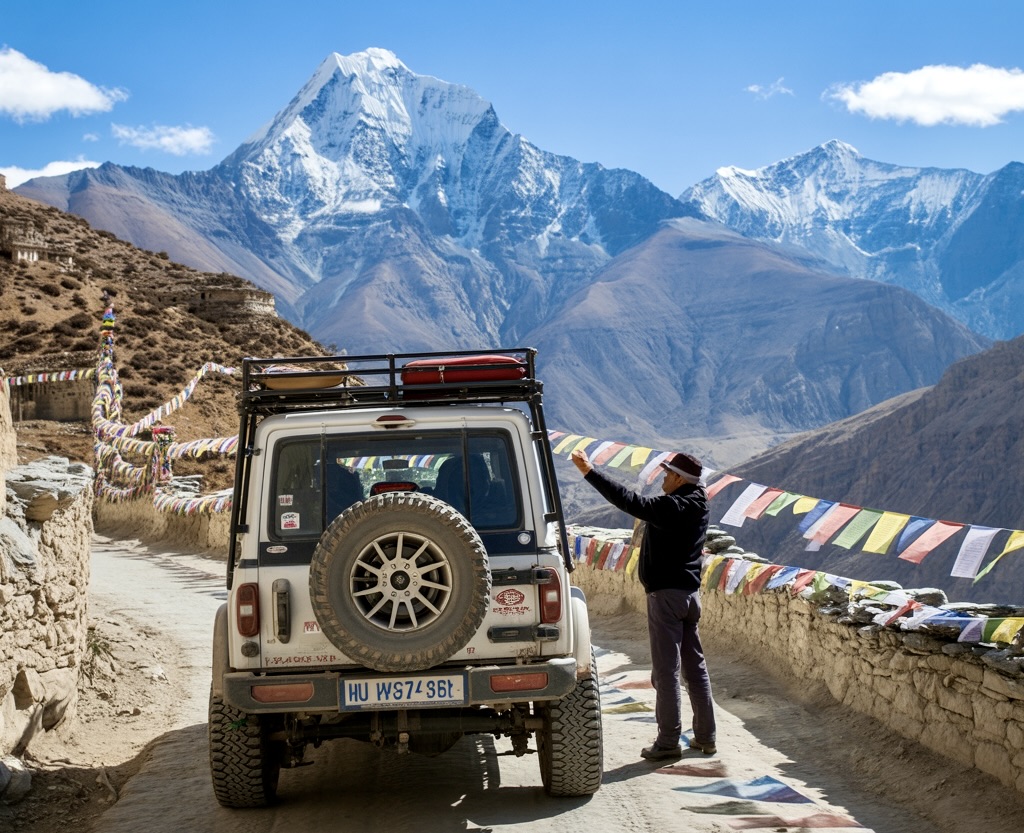
Days four through six are dedicated to exploring Lo Manthang, the ancient walled capital where the Tiji Festival unfolds. We've timed everything perfectly so you'll experience all three days of this spectacular Buddhist celebration. On days seven and eight, we take a different return route through Dhakmar and Ghami, showcasing the region's diverse landscapes.
The final two days bring us back through Jomsom to Pokhara, and ultimately to Kathmandu, giving you time to reflect on this remarkable journey.
Scenic Highlights Along the Journey
The drive to Upper Mustang isn't just about the destination—it's a visual feast at every turn. As we ascend from the lush green hills around Pokhara, the landscape transforms dramatically into the arid, wind-carved canyons of the rain shadow region.
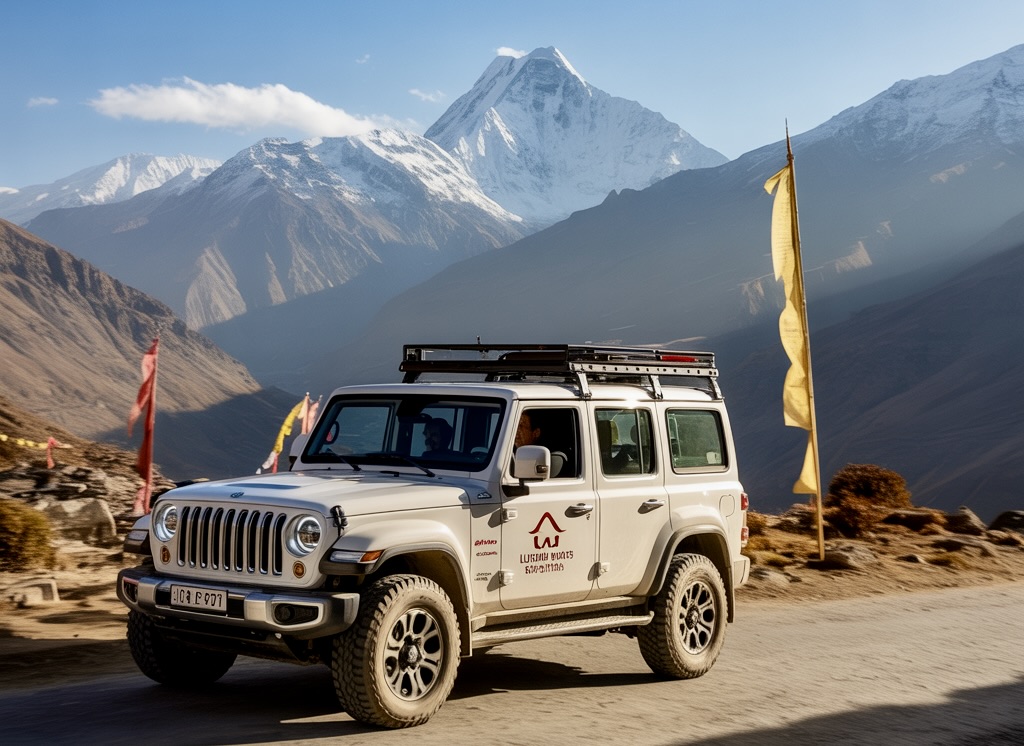
Our jeeps pause at Kagbeni, the traditional gateway to the forbidden kingdom, where the mighty Kali Gandaki River cuts through imposing cliffs. The road winds alongside centuries-old mani walls and past rainbow-colored formations at Dhakmar's red cliffs.
The panoramic views of Nilgiri, Annapurna, and Dhaulagiri snow peaks accompany us at various points, creating perfect photography opportunities. We stop at the Chungsi Cave, where Guru Rinpoche meditated, and take in the surreal beauty of Mustang's eroded hills that resemble a Martian landscape.
Overnight Accommodations and Amenities
We understand that comfort matters after exciting days exploring. In Kathmandu and Pokhara, we put you up in premium 4-star hotels with all modern amenities.
Once in Upper Mustang, we've selected the finest available accommodations in each location.
In Lo Manthang, during the busy festival period, we've secured rooms in the top-tier boutique hotels that blend traditional Mustang architecture with unexpected comforts. Each property offers private bathrooms, reliable hot water, and comfortable beds with quality linens.
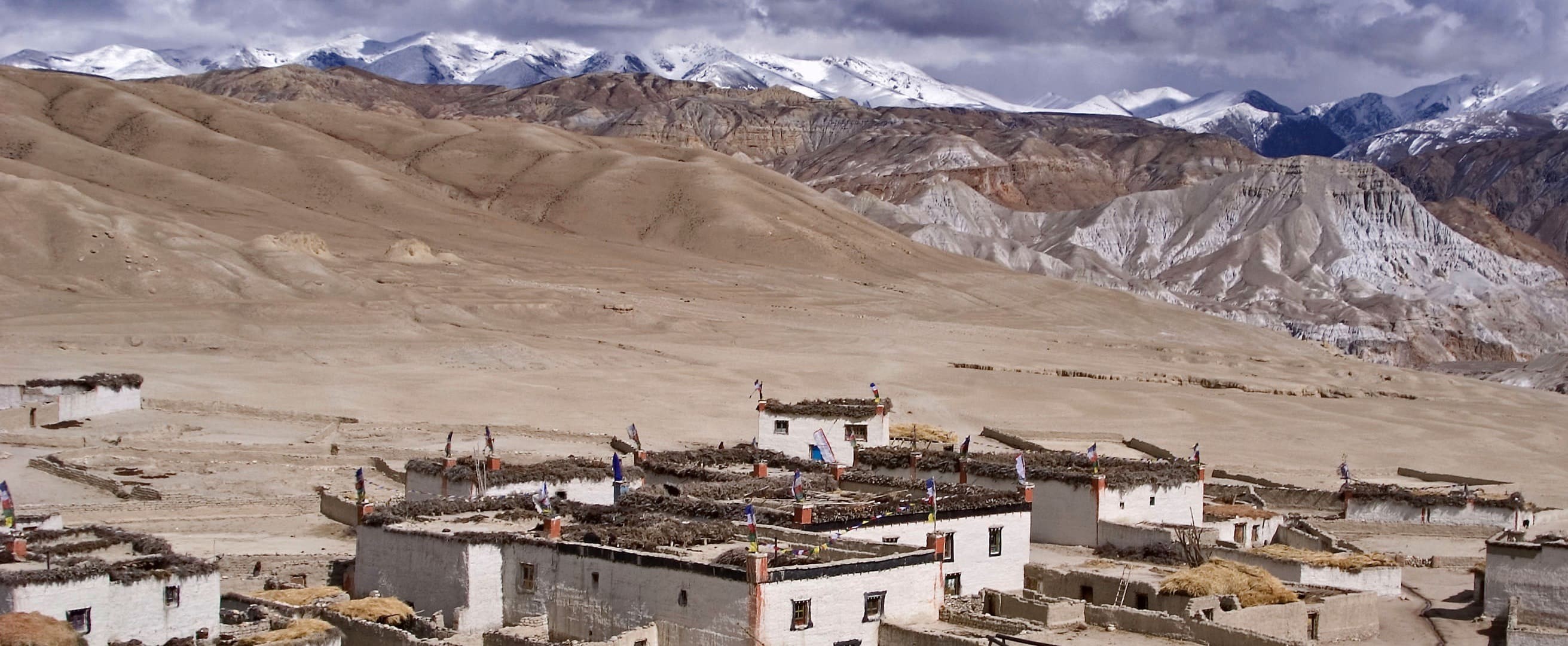
Our accommodations feature authentic local cuisine alongside continental options, and we ensure each property meets our strict standards for cleanliness and service. While Upper Mustang's remoteness means connectivity can be limited, most overnight stops offer Wi-Fi in common areas, allowing you to share your incredible experiences when desired.
Customizable Tour Options
No two travelers are exactly alike, which is why we offer several ways to personalize your Tiji Festival jeep tour. Want more photography time? We can arrange sunset visits to strategic viewpoints. Interested in deepening your understanding of Tibetan Buddhism? We'll connect you with knowledgeable local monks for private discussions.

For the more adventurous, we offer optional short hikes at key locations, letting you stretch your legs and reach viewpoints inaccessible by vehicle. Food enthusiasts can enjoy special cooking demonstrations of traditional Mustang cuisine.
We also offer extensions to your journey—perhaps a few days of trekking in the Annapurna region before the tour, or a relaxing stay at Pokhara's lakeside after your Mustang adventure. Our flexibility ensures this once-in-a-lifetime experience aligns perfectly with your personal travel style.
Preparing for Your Upper Mustang Adventure
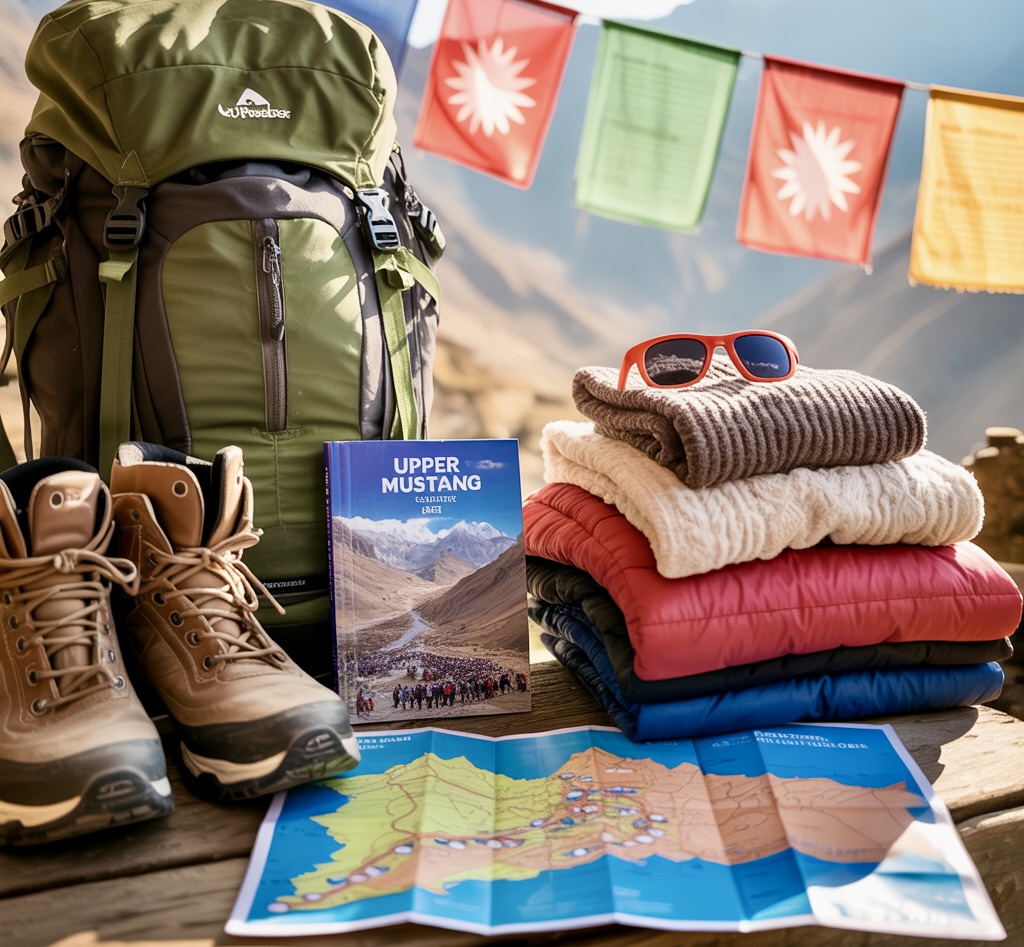
Required Permits and Documentation
Getting all the right paperwork sorted is crucial before heading to Upper Mustang. We always make sure our guests have these essential permits:
- Restricted Area Permit: This costs around $500 per person for the first 10 days, then $50 per day after that. It's non-negotiable for entering Upper Mustang.
- ACAP Entry Permit: The Annapurna Conservation Area Project permit costs about $30 per person.
- TIMS Card: The Tourist Information Management System card runs about $10 per person.
We handle all permit arrangements for our clients, but you'll need to provide:
- Valid passport with at least 6 months validity
- 4 passport-sized photos
- Travel insurance details covering high-altitude trekking and evacuation
What to Pack for Comfort and Cultural Sensitivity
Packing right makes all the difference in Upper Mustang. We recommend:
Clothing: Lightweight, breathable layers are your best friends. Days can be sunny and warm, nights downright cold.
- Moisture-wicking base layers
- Mid-layers (fleece or down jacket)
- Windproof/waterproof outer layer
- Sun hat and warm beanie
- Comfortable hiking boots (broken in!)
- Lightweight shoes for evenings
Cultural Considerations:
- Modest clothing for monastery visits (shoulders and knees covered)
- Small gifts for locals (pens, notebooks, not candy)
- A scarf or bandana (dust protection + can be used as offering at sacred sites)
Health and Altitude Considerations
Altitude sickness doesn't play favorites. We take it seriously, and you should too:
- Start Diamox 24 hours before ascending above 3,000m (only after consulting your doctor)
- Drink 3-4 liters of water daily
- Skip the alcohol until you're acclimatized
- Our jeep tours include proper acclimatization stops
- We always carry a comprehensive first-aid kit, but bring your personal medications, plus:
- Rehydration salts
- Broad-spectrum antibiotics
- Pain relievers
- Band-aids and blister treatment
- Hand sanitizer and wet wipes
Connectivity and Communication Options
Staying connected in Upper Mustang is tricky but not impossible:
- Mobile Coverage: NTC (Nepal Telecom) works in larger settlements like Lo Manthang, but it's spotty elsewhere.
- Internet: Basic WiFi is available in some teahouses and hotels, but it's slow and unreliable.
- Prepaid SIM Cards: We recommend getting one in Kathmandu before departure.
- Satellite Phones: Our guides carry them for emergencies.
Smart move? Download offline maps, translation apps, and entertainment before leaving Kathmandu. Consider bringing a power bank or solar charger too - electricity can be limited and expensive in remote areas.
Cultural Immersion Experiences
Meeting Local Mustangi People
We believe the soul of Upper Mustang lies in its people. During our jeep tour, we make special arrangements for genuine interactions with local Mustangi families. These encounters aren't staged tourist experiences—they're real moments of connection.

The Mustangi people welcome us into their traditional homes with warm smiles and even warmer butter tea. Their lifestyle remains largely unchanged for centuries, a beautiful blend of Tibetan culture and unique local traditions.
In every village we visit, from Lo Manthang to Kagbeni, the locals share stories of their ancestors, daily routines, and the challenges of living in this harsh mountain environment. We're often struck by their resilience and unwavering spirits despite the difficult conditions.
Many guests tell us these personal connections become their most treasured memories from the trip. There's something magical about sitting by a centuries-old hearth, watching a grandmother prepare traditional bread while her grandchildren play nearby with toys handcrafted from local materials.
Traditional Tibetan Buddhist Monasteries
The monasteries of Upper Mustang aren't just religious buildings—they're living, breathing centers of culture that have preserved ancient knowledge through centuries of isolation.
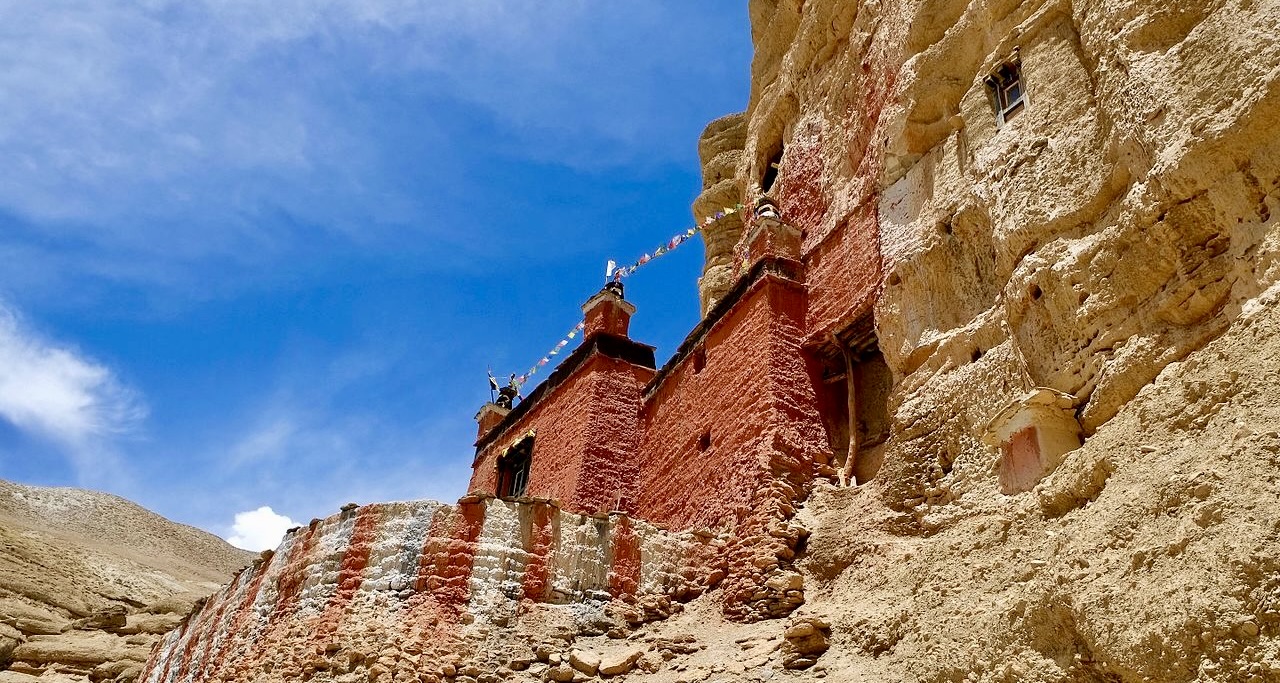
We take you beyond the typical tourist path into monasteries where monks still practice rituals unchanged for 500+ years. The vibrant paintings adorning monastery walls tell stories of demons, deities, and the Buddha's journey, some dating back to the 15th century.
At Namgyal Monastery in Lo Manthang, we've developed relationships with senior monks who occasionally invite our small groups to witness morning prayers. The haunting echo of chanting monks, the smell of juniper incense, and the soft flicker of butter lamps create an atmosphere that transports you to another time.
The Tiji Festival itself centers around Chöde Monastery, where we witness monks performing elaborate masked dances representing the triumph of good over evil. Our local guides explain each symbol and movement, offering insights few visitors ever receive.
Ancient Cave Dwellings Exploration
The cliff-side caves of Upper Mustang contain some of humanity's most fascinating yet least explored archaeological treasures. We navigate to remote locations where thousands of human-made caves honeycomb the eroded cliffs.

Some caves rise five stories high in the sandstone cliffs, requiring some adventure to access. Our experienced guides know which caves contain the most remarkable findings—ancient Buddhist paintings, manuscripts, and artifacts that provide glimpses into life hundreds of years ago.
In Chhoser village, we explore the extraordinary five-story cave dwelling that once housed an entire community. Walking through these ancient living quarters, we can almost hear the echoes of long-ago conversations.
What amazes us most is that some local families still use certain caves for storage or winter shelter. This isn't history locked away in a museum—it's living heritage that continues to serve practical purposes in modern Mustangi life.
Local Cuisine and Dining Experiences
The food of Upper Mustang tells the story of survival in a harsh landscape, with influences from both Nepal and Tibet creating a unique culinary tradition.
We arrange meals with local families where you'll help prepare traditional dishes like thukpa (noodle soup), tsampa (roasted barley flour), and momo dumplings filled with local vegetables or yak meat. Nothing beats the taste of fresh bread baked in centuries-old clay ovens while trading stories with your Mustangi hosts.
During the Tiji Festival, we join community feasts where local chang (barley beer) flows freely and special festival foods appear only once a year. These communal meals offer rare opportunities to participate in celebrations exactly as locals do.
The ingredients here tell a story of adaptation—buckwheat, barley, and potatoes thrive in high altitudes, while traditional preservation methods like drying and fermenting help communities survive long winters. We've found that sharing these meals creates bonds that transcend language barriers and cultural differences.
Luxury Holidays Nepal's Exclusive Services
Expert Local Guides and Drivers
We pride ourselves on working with the most knowledgeable local guides and experienced drivers in Nepal. Our team members aren't just professionals—they're passionate locals who've grown up in these regions and know Upper Mustang like the backs of their hands. Many of our guides have participated in the Tiji Festival dozens of times and can share insights you won't find in any guidebook.
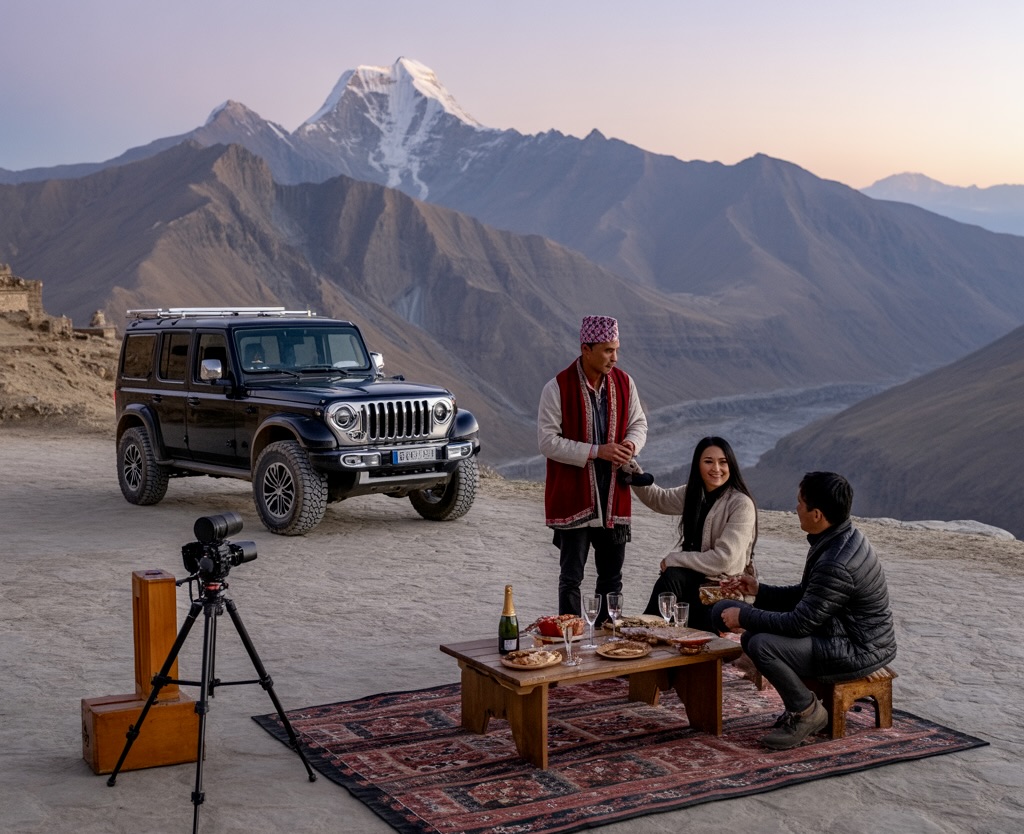
Our drivers navigate the challenging terrains of the Himalayas with exceptional skill, ensuring your safety while making necessary stops at the most breathtaking viewpoints. They know exactly when to pause for that perfect photo opportunity of snow-capped peaks or ancient monasteries.
Premium Transportation Fleet
Our jeep fleet stands head and shoulders above the rest. We maintain a collection of modern, comfortable 4WD vehicles specifically equipped for high-altitude journeys. Each jeep comes with plush seating, excellent suspension for those rough mountain roads, and panoramic windows so you won't miss a single vista.
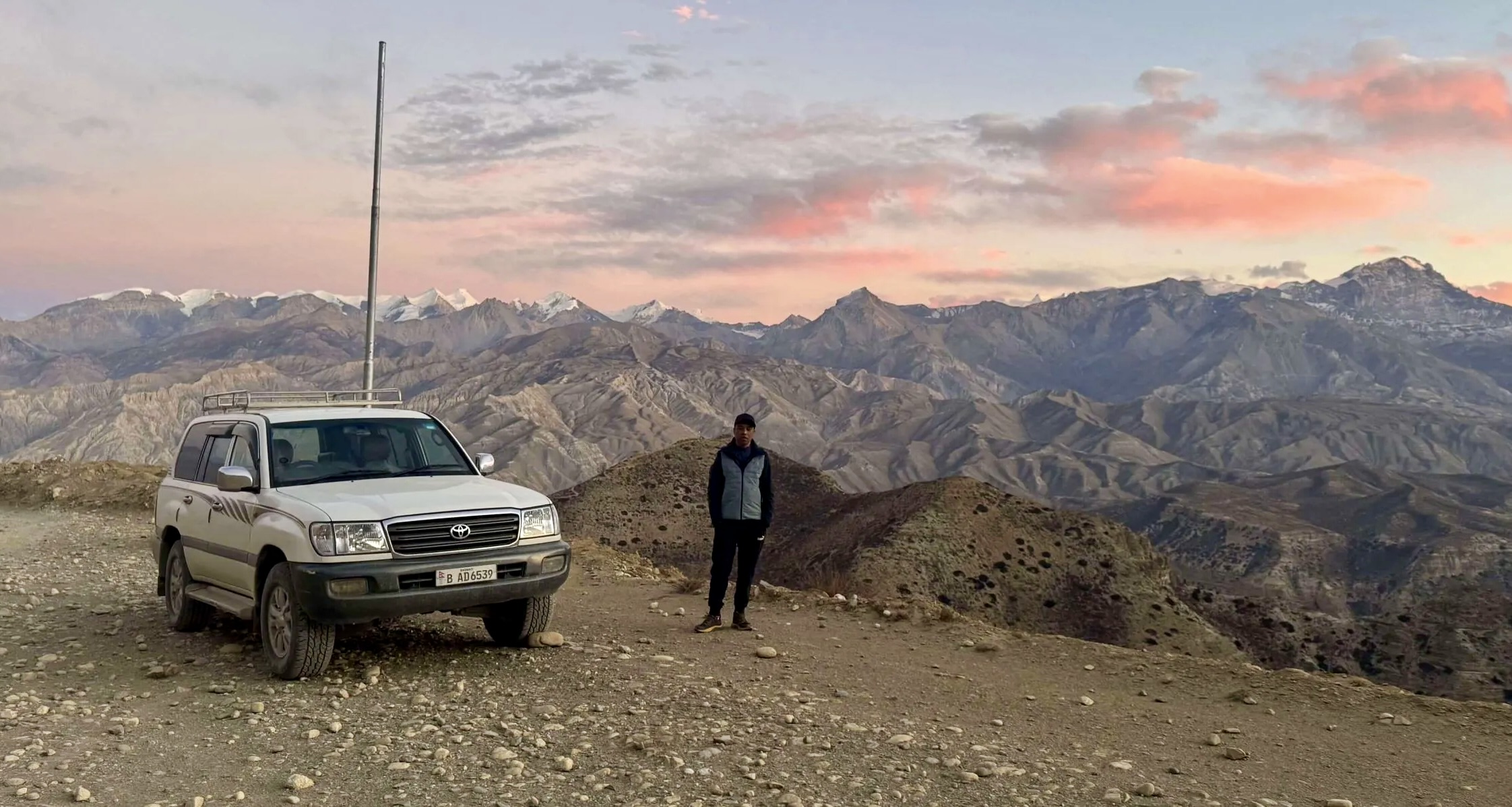
We've thought of everything—from oxygen supplies for altitude comfort to premium blankets for chilly mornings. Every vehicle undergoes rigorous maintenance checks before each tour, because your comfort and safety are non-negotiable for us.
Special Access to Festival Events
One major advantage of traveling with us? The doors open. Through years of building relationships with local communities, we've secured special access to key Tiji Festival events that regular tourists simply can't experience.
Our guests enjoy reserved seating at the main ceremonies, opportunities to meet with monks and festival participants, and even private viewings of sacred mask preparations. We've arranged exclusive photography permissions in areas typically off-limits to visitors, allowing you to capture moments most travelers miss.
Personalized Attention and Concierge Support
From the moment you reach out to us until your return home, our dedicated concierge team handles every detail of your journey. Need special dietary accommodations? Want to surprise your partner with a unique cultural experience? Just ask.
We maintain a 4:1 guest-to-staff ratio on all our Upper Mustang tours, ensuring personalized attention throughout. Our team anticipates needs before you even express them—whether it's offering a warm cup of traditional butter tea during a cool morning or arranging an impromptu stop at a local artisan's workshop you expressed interest in.
Sustainable Tourism Practices
We've built our reputation not just on luxury, but on responsibility. Our Upper Mustang tours incorporate careful sustainability practices that protect this fragile cultural and environmental treasure.
We strictly follow "leave no trace" principles, contribute a portion of every booking to local conservation efforts, and work closely with communities to ensure tourism benefits them directly. Our jeeps are maintained to minimize emissions, and we've implemented a plastic reduction program across all our tours.
By choosing us, you're experiencing Upper Mustang in the most luxurious way possible while helping preserve it for generations to come.

Upper Mustang Tiji Festival Jeep Tour Conclusion
The Upper Mustang Tiji Festival Jeep Tour offers an extraordinary journey into one of Nepal's most remote and culturally rich regions. From exploring the ancient kingdom with its Tibetan-influenced heritage to witnessing the sacred three-day Tiji Festival that celebrates the triumph of good over evil, this adventure combines spiritual experiences with breathtaking Himalayan landscapes. Our carefully crafted luxury jeep itinerary ensures comfortable travel through challenging terrain while providing ample opportunities for cultural immersion with local Loba communities.
As you prepare for this once-in-a-lifetime adventure, Luxury Holidays Nepal stands ready to elevate your experience with our exclusive services and attention to detail. Whether you're captivated by the masked dances of the Tiji Festival, the medieval monasteries of Lo Manthang, or the dramatic desert landscapes, this journey promises profound connections and unforgettable memories. Book your Upper Mustang Tiji Festival Jeep Tour today and discover the hidden treasures of Nepal's forbidden kingdom in unparalleled comfort and style.
Contact Luxury Holidays Nepal to craft your perfect Upper Mustang journey today.
If you need any further information, please contact us by email: [email protected], Phone: +977- 985 100 5129 (WhatsApp).




